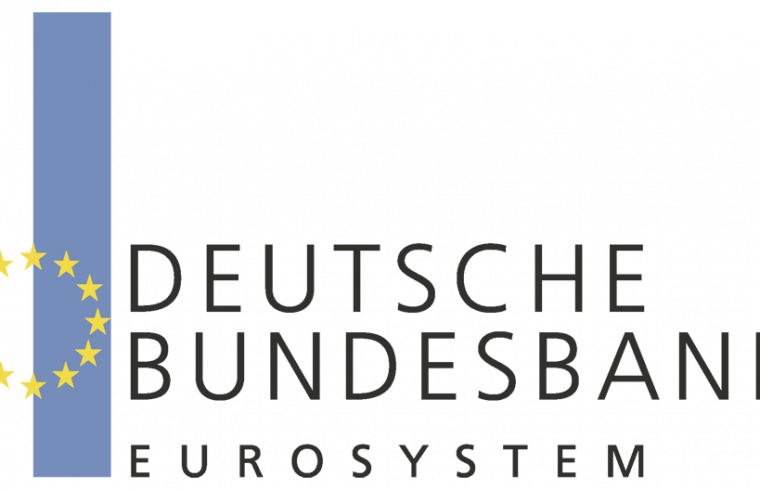Primary and secondary German direct investment abroad at year-end 2018 totalled €1,277 billion, up €70 billion on the year. While equity and credit claims amounted to €1,761 billion, liabilities came to €484 billion, chiefly as a result of reverse investments (loans granted by non-resident funding subsidiaries to their German investors). At year-end 2018, primary and secondary direct investment in Germany totalled €540 billion, which is an increase of €4 billion on the year.
United States still the most important destination for German direct investment
The primary and secondary presentation of FDI stock data looks through holding companies, so the corresponding country breakdown shows the ultimate destinations of German direct investment abroad. This breakdown reveals that Europe continued to be the main region for German firms’ direct investment abroad at year-end 2018, accounting for just under half of total outward FDI (€635 billion). Viewed in terms of individual countries, the United States was still the most important destination, with a figure of €361 billion, some distance ahead of the United Kingdom (€138 billion), China (€86 billion) and the euro area countries Luxembourg (€86 billion), Austria (€45 billion) and France (€45 billion).
Luxembourg and the Netherlands play a special role for different reasons. The comparatively high level of German FDI in Luxembourg was mainly due to investment in the financial and insurance services sector, while the Netherlands has always been a major player in intra-group corporate finance. The negative stock of €59 billion reported for the Netherlands was due to the high volume of loans granted by Dutch funding subsidiaries to their German direct investors. In the Asian region, India ranked alongside China as a major destination for German investors (€17 billion).
Foreign direct investment in Germany almost unchanged
At year-end 2018, primary and secondary direct investment in Germany totalled €540 billion, which is an increase of €4 billion on the year. Presentation of foreign direct investment in Germany by ultimate investing country (UIC) shows the ultimate source of investment. Two-thirds of inward FDI originated from Europe (€364 billion). However, in a country breakdown, the United States ranked first in this category, too, accounting for FDI of €99 billion. Round-tripping put Germany in second place with a figure of €52 billion (being the amount invested by German direct investors in German subsidiaries via non-resident subsidiary). The magnitude of round-tripping is such that Germany even ranked ahead of the United Kingdom (€48 billion) and the Netherlands (€34 billion) in UIC terms. Asia featured less strongly in terms of inward FDI; the only country in Asia which provided more than €10 billion in direct investment in Germany was Japan (€33 billion), followed by Qatar (€7 billion).
Direct investment flows: less momentum in 2019
The transaction data for 2019 show that the strong expansion observed in outward FDI since 2015 is continuing. However, outward German FDI flows in 2019 were significantly smaller than they had been a year earlier, dropping to just over €100 billion from €148 billion. The pace of equity flows eased notably, slowing to just €87 billion after growing by €147 billion in the previous year. Reinvested earnings were responsible for almost half of the increase recorded in 2019 (€41 billion).
Europe remained the number one target region for outward German FDI in 2019, attracting more than half of the new investment (€55 billion). The bulk of this figure (€49 billion) went to euro area countries, chiefly Luxembourg (€14 billion), the Netherlands (€9 billion) and Italy (€9 billion). The United Kingdom, on the other hand, registered disinvestment of nearly €10 billion, a clear increase on the 2018 figure of -€2 billion, possibly on account of the UK’s impending withdrawal from the EU. A country breakdown reveals that this is another category in which the United States ranks first, with a transaction volume of €34 billion. German FDI flows to China came to just €4 billion.
Modest investment by foreign enterprises in Germany
Non-resident enterprises made far more modest additions to their direct investment stocks in Germany in 2019 than they had in previous years. Loans transacted between affiliated enterprises – primarily for tax reasons – accounted for the bulk (€24 billion) of the €45 billion in new investment. A further €21 billion came from reinvested earnings, while new investment in equity capital remained below €1 billion.
As with the FDI claims, affiliated enterprises from Europe were the largest direct counterparties in the provision of direct investment in Germany, at more than €27 billion. Euro area countries only accounted for around one-quarter of inward FDI flows in 2019 (just under €8 billion), which is significantly lower than in the previous years. To put that figure into proportion, inward FDI flows from the United Kingdom alone came to more than €10 billion. Strong FDI inflows from Luxembourg and Ireland (€15 billion and €13 billion, respectively) contrasted with distinct disinvestment from Belgium (€20 billion) and the Netherlands (€15 billion). Outside Europe, the United States was still the country with the strongest inflows (€13 billion), followed by Japan and China (€5 billion and €2 billion, respectively).
External sector: Bundesbank publishes new Special Series on direct investment
On 16 April 2020 the Bundesbank switched to a new format for its statistical publications, replacing its previous range of supplements and special publications with statistical series, some with partially modified content. Two publications affected by this new approach are Special Statistical Publication 10 (“Foreign direct investment stocks statistics”) and the publication “Direct Investment according to Balance of Payments Statistics”, which have now been combined to form the new “Statistical Series Direct Investment”. The new Statistical Series have a modular structure, which means that each issue can be updated on an ongoing basis and data downloaded flexibly. Fully revised methodological notes now offer a clear and concise overview of both the different methods used internationally for the presentation of FDI statistics and the analytical differences in the country classifications by direct and ultimate direct investor or direct investment enterprise. They also contain a table outlining the FDI data offered by the Bundesbank.












